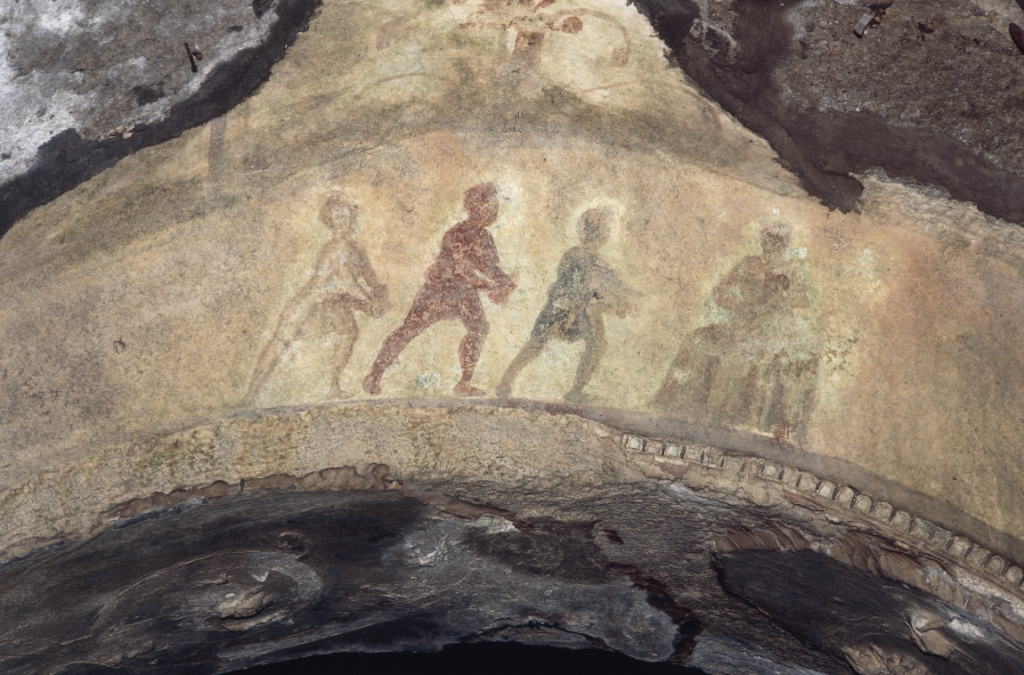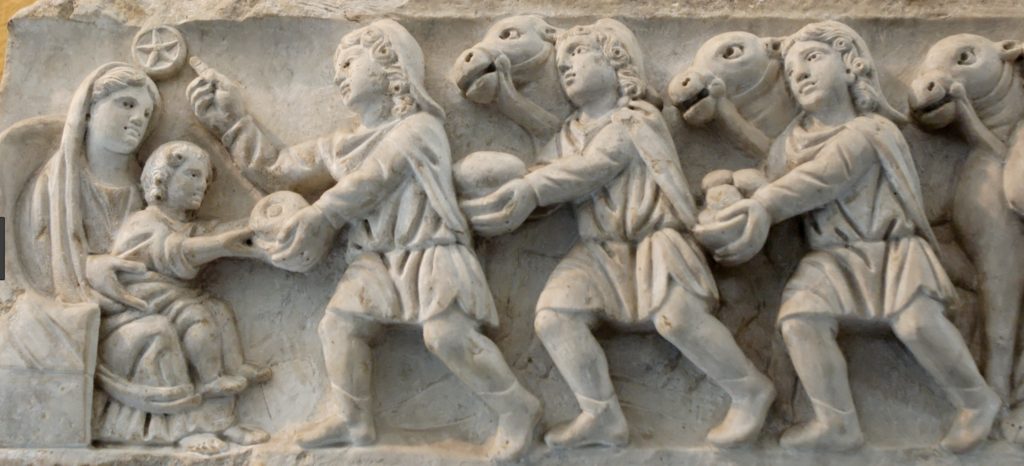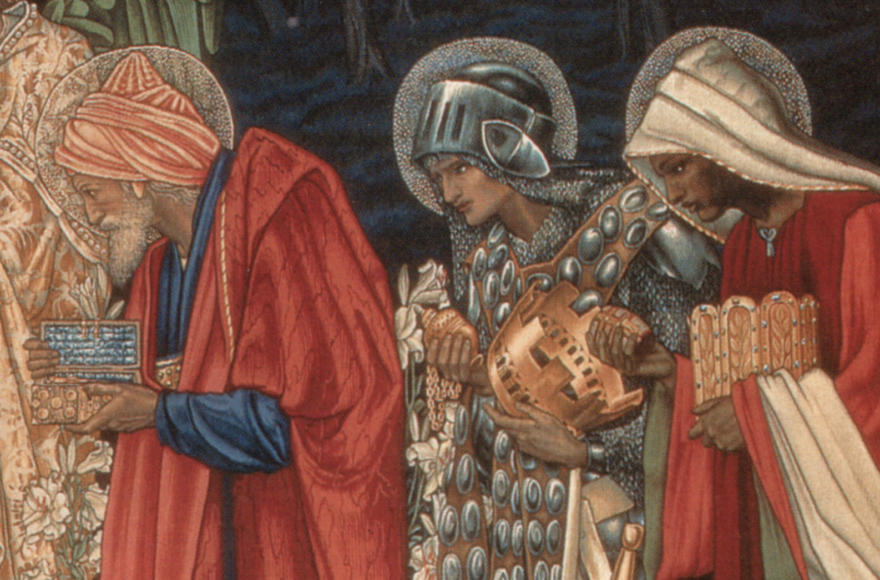The Magi, Twelve Days of the Nativity, Day 8
In this series of articles, titled “Twelve Days of the Nativity, ” We take a deeper look into the nativity and all of it’s beautiful symbols. The Twelve Days of Christmas take on a whole new meaning as we discover Jesus Christ and His Ministry!
Psalm 68:29, Because of thy temple at Jerusalem shall kings bring presents unto thee.
Psalm 72:11, Yea, all kings shall fall down before him: all nations shall serve him.
Isaiah 60:3, And the Gentiles shall come to thy light, and kings to the brightness of thy rising.

THE OLDEST CHRISTIAN ART
Take a look at this ancient painting of the Magi pictured above. This art is titled, “Adoration of the Magi,” and it is a wall painting from a catacomb in Pricilla, Rome. To date, this is one of the oldest magi art depictions found in the Christian tradition. It dates from between 300 to 400 A.D., and is a reflection of the growth of the Nativity story and its narrative several hundred years after the birth of Christ.
GOD AS AN ARTIST
Great artist imbed symbols into their artwork. As a creative individual, I understand how a person’s art is a reflection of feelings and emotions that are conveyed on paper. In fact, artist typically convey meaning by imbedding images in that art that reflect that intuitive meaning from the artist himself. The more I study about God, the more I realize HE is an artist conveying meaning through symbols (i.e parables), and Jesus Christ was the “word” that understood the meaning of the art. The deeper we ponder His art, the more “understanding” we will gain.

EYES TOWARD HEAVEN
Here is another depiction of the magi from about the 4th century. Both this depiction, and the one above share something in common—the Magi, as they arrive at Mary holding the Christ child, their heads are raised, pointing upward, as if looking up toward heaven. This reference toward the star is more than just a reference to a constellation or pattern found in the heavens. It’s a reference to believers who receive “signs” from the heavens. It reminds me of the scripture in Mark that says, “And they went forth, and preached every where, the Lord working with them, and confirming the word with signs following.” (Mark 9:20)
SIGNS FOLLOW BELIEVERS
True believers don’t follow signs—rather signs follow them. They are able to work miracles, cast out devils, speak with a new tongue—not because they followed signs, but because signs followed them after they followed God in faith. (Mark 16:9-20)
KNOWING MEANING BEFORE THE STAR APPEARS
When the Magi went to find the Christ child, they didn’t head out on a journey to “search” for a star that appeared to discover its meaning. Rather, they knew it’s meaning before they were given an order from Herod. Herod sought to kill the Christ child after the star appeared (Matthew 2:7). The Magi already knew “Christ” before the star appeared. The Magi were already believers—when they searched the heavens, they knew they had a creator. When they searched for wisdom—they knew they were “instructed” by Him. When the time came to follow the orders of a wicked King who sought to murder the King of Kings, they obeyed the orders of One greater instead. The Magi knew which King they served, and God provided an escape for them (Matthew 2:12).
HE IS THE LIGHT IN THE DARK
To me, the art depictions of the Magi are less about men who saw a star and wanted to see where it went, but more about a star that appears to the rest of the world, that they (the Magi) already believed in, and that star confirms their faith. That star was a symbol of a light that already existed within them. “But ye, brethren, are not in darkness, that that day should overtake you as a thief. Ye are all the children of light, and the children of the day: we are not of the night, nor of darkness. Therefore let us not sleep, as do others; but let us watch and be sober. (Thessalonians 5:4-6)
ANCIENT WORSHIP PRACTICES OF THE MAGI
Some interesting facts about the Magi. The word Magi means, or in other words, denotes a “member of a priestly caste” from the ancient Persian religion called Zoroastrianism. In ancient art, the Magi are depicted wearing eastern style clothing, and in more detailed art, often dressed as those of a religious rank or Kingship. The interesting thing about Zoroastrianism is that it was founded by a man, Zoroaster, who taught a very similar spiritual philosophy to that of Christ and His followers. He claimed that a “shing being” named “Good Purpose” revealed himself to him, and soon thereafter, Zoroaster became aware of the the difference between “truth” and “lies.”
In Zoroaster’s writings he taught about concepts such as “free will”, and he disagreed with “over-ritualizing” religious ceremonies, as well as His opposition to the “religious, High-Society” system that existed in Persia—and was vocal about it. When I read about the shining being called “Good Purpose” that visited him, it reminded me of another “shining being” who brought “Good Tidings” to the Shepherds. Maybe this “shining being” has been visiting “shepherds” all along.
A GOD THAT EXISTED BEFORE THEM ALL
When Jesus Christ said to the pharisees and scribes, “Before Abraham was, I AM,” (John 8:58). He said this because He existed BEFORE Abraham. He had existed before them all! When non-believers reject the Christian tradition because of its parallels to ancient cultures that existed long before Judaism, I like to think about this scripture—and I am reminded that He always existed. He is The Creator of Us All—and He made Himself manifest to us, and will also manifest Himself to us again.
